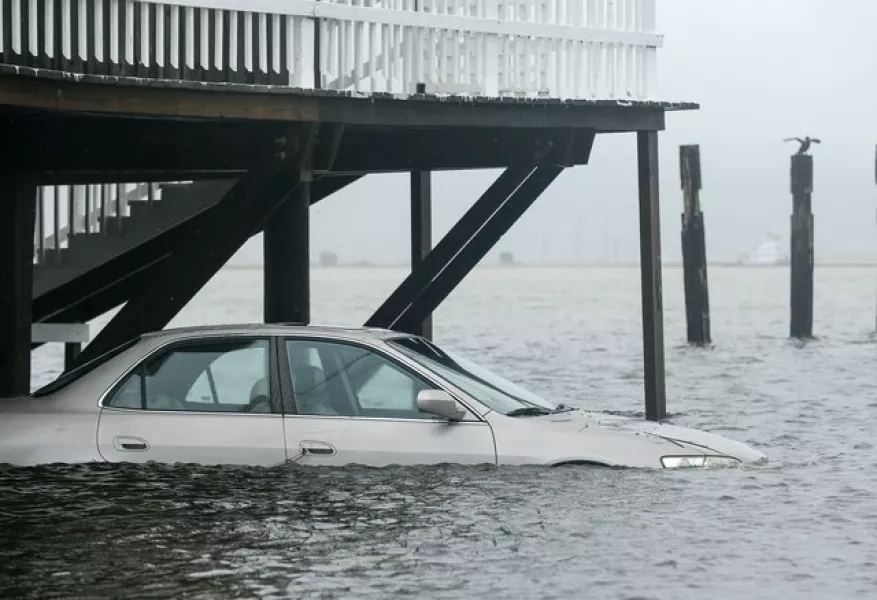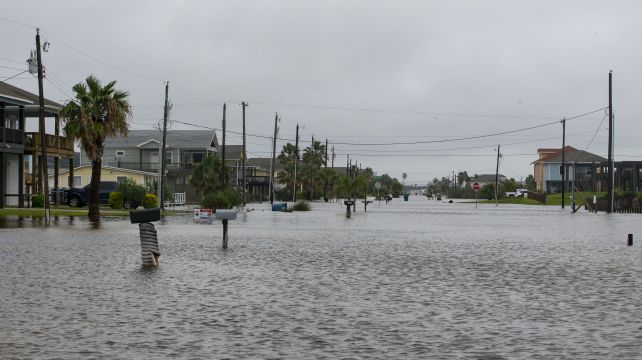The storm reached land just north of Port O’Connor. It is moving north-west and is expected to stall inland over Texas, before moving slowly towards the east-north-east.
Beta will move inland over south-eastern Texas through Wednesday and then over Louisiana and Mississippi from Wednesday night until Friday.
National Weather Service meteorologist Amaryllis Cotto said 6in to 12in of rain has fallen in the Galveston area with isolated amounts of up to 18in. Dangerous flash flooding is expected through to Wednesday.
Beta was the ninth named storm to make landfall in the continental US this year. That ties a record set in 1916, according to Colorado State University hurricane researcher Phil Klotzbach.
This was the first time a Greek letter-named storm made landfall in the continental US. Forecasters ran out of traditional storm names on Friday, forcing the use of the Greek alphabet for only the second time since the 1950s.
The biggest unknown from Beta is how much rainfall it could produce in areas that have already seen their share of damaging weather during a busy hurricane season.
“This still is probably the most uncertain part of the forecast,” said Dan Reilly, a meteorologist with the National Weather Service.

Earlier predictions of up to 20in in some areas were downgraded on Monday to up to 15in. Texas coastal counties were most likely to see 4in to 6in with 2in to 4in further inland, Mr Reilly said.
Forecasters and officials reassured residents that Beta is not expected to be another Hurricane Harvey or Tropical Storm Imelda. Harvey dumped more than 50in of rain on Houston in 2017, causing 125 billion dollars in damage in Texas. Imelda, which hit south-east Texas last year, was one of the wettest cyclones on record.
On Monday, state governor Greg Abbott issued a disaster declaration for 29 Texas counties ahead of Beta’s arrival.
Beta is also forecast to dump heavy rain on the south-western corner of Louisiana three weeks after the same area got pounded by Hurricane Laura.
The rainfall and storm surge prompted governor John Bel Edwards to declare a state of emergency.







